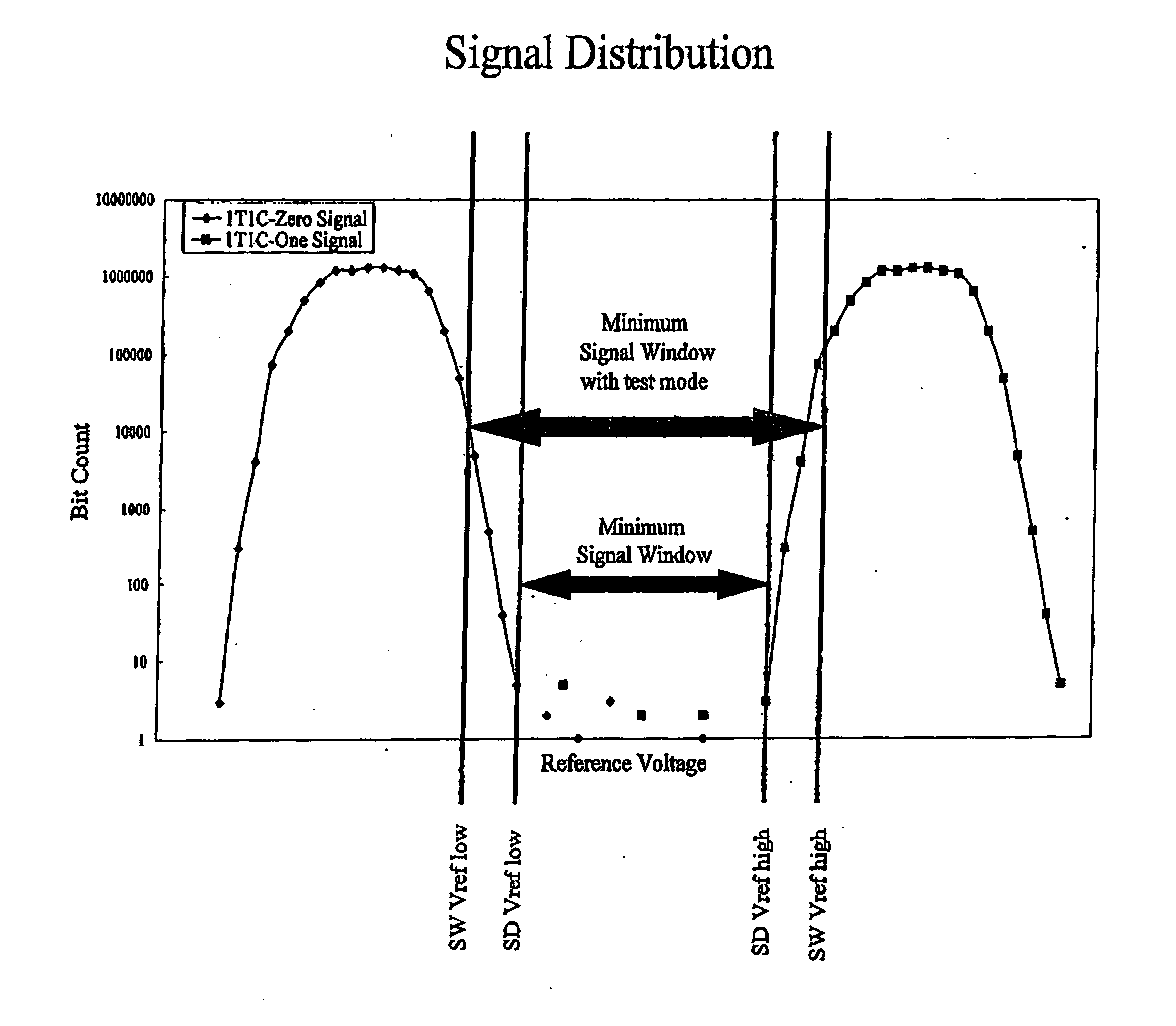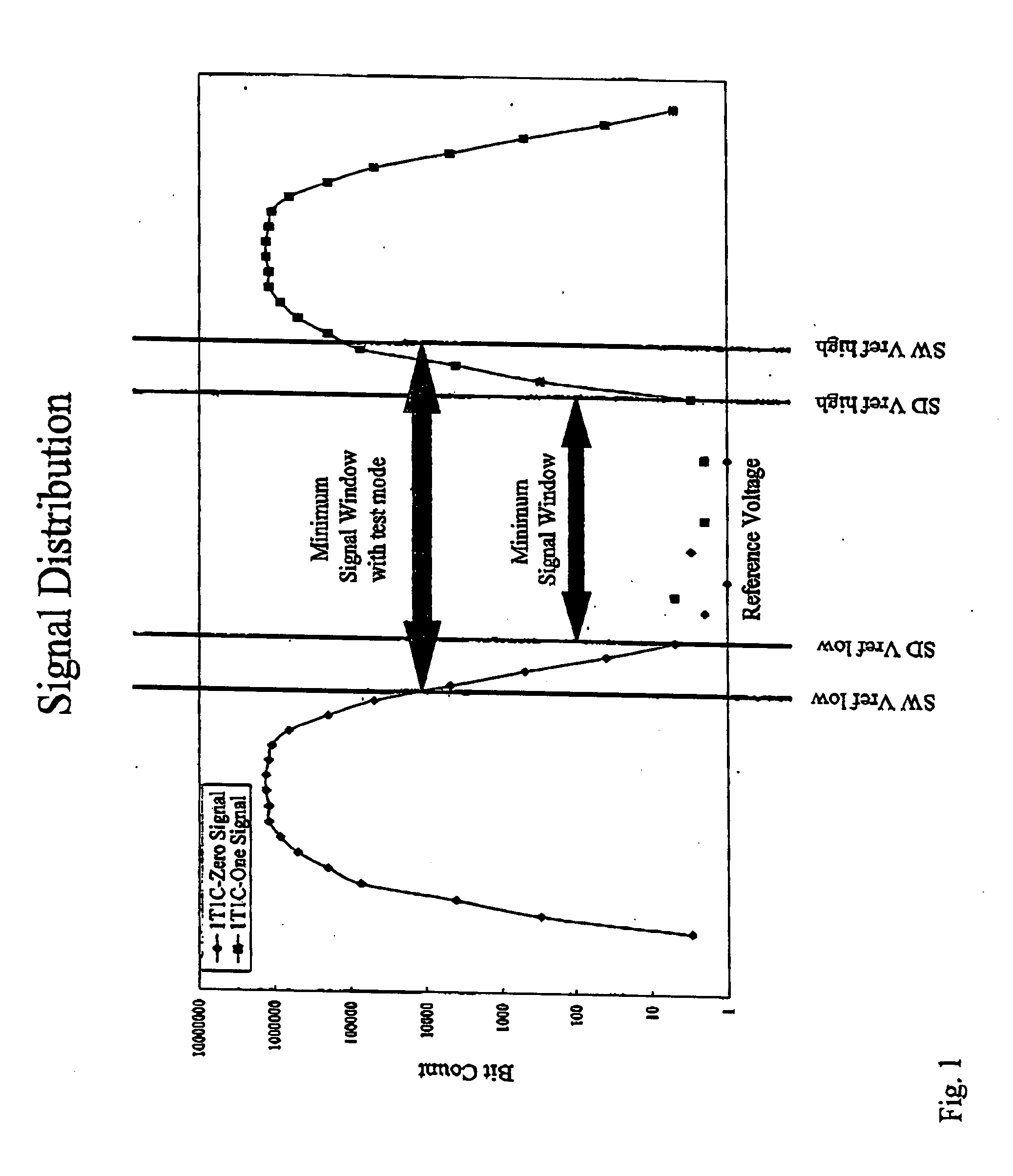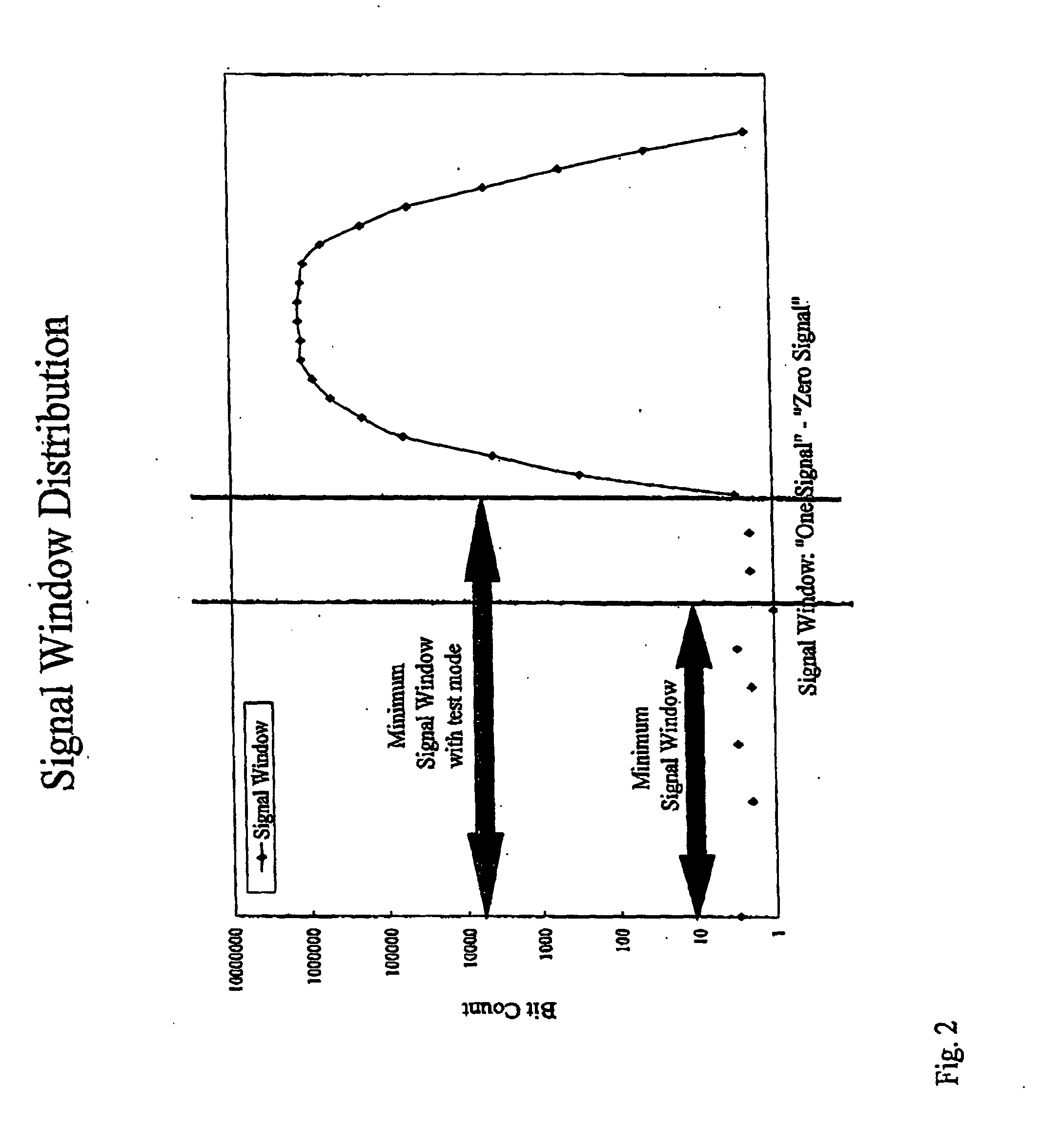Memory cell signal window testing apparatus
a technology of memory cell and signal window, which is applied in the direction of testing circuits, resistance/reactance/impedence, instruments, etc., can solve the problems of dramatic increase in failcount, dramatic decrease in yield, and the highest probability of failure of signal window higher than the tested window but lower than the main distribution during the lifetime of the chip
- Summary
- Abstract
- Description
- Claims
- Application Information
AI Technical Summary
Benefits of technology
Problems solved by technology
Method used
Image
Examples
Embodiment Construction
[0015] A memory cell signal window testing apparatus 101 and method for testing the signal window of a memory are described with respect to FIGS. 3 and 4. The apparatus 101 can be on a memory chip as a test mode. At step 401 a BIST (Built In Self Test) controller 103 is enabled in response to receiving a signal input into a BIST Enable input 105.
[0016] At step 403 the BIST controller 103 sends a signal through a Vref Control (voltage reference control) input 111 to set a Vref Generator (reference voltage generator) 113 to output a SW Vref_low signal (signal window low reference volage signal) through the Vref output 115. The Vref is supplied to an array of memory cells 117 being tested.
[0017] At step 405 the BIST controller 103 sets the storage positions of a first storage register 109 to “0” (zero). The first storage register 109 can store 16 bits, for example.
[0018] At step 407 the “0” data in the first storage register 109 is written through an I / O (Input Output) control 131 t...
PUM
 Login to View More
Login to View More Abstract
Description
Claims
Application Information
 Login to View More
Login to View More - R&D
- Intellectual Property
- Life Sciences
- Materials
- Tech Scout
- Unparalleled Data Quality
- Higher Quality Content
- 60% Fewer Hallucinations
Browse by: Latest US Patents, China's latest patents, Technical Efficacy Thesaurus, Application Domain, Technology Topic, Popular Technical Reports.
© 2025 PatSnap. All rights reserved.Legal|Privacy policy|Modern Slavery Act Transparency Statement|Sitemap|About US| Contact US: help@patsnap.com



